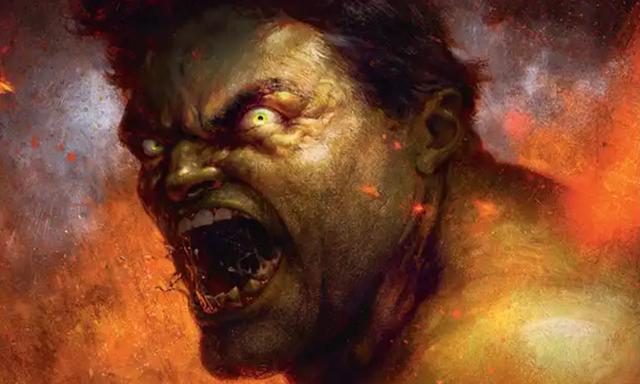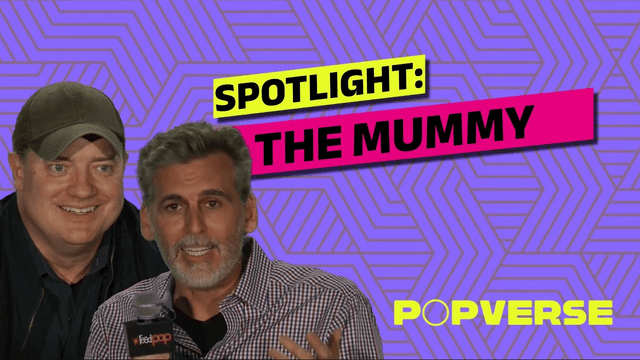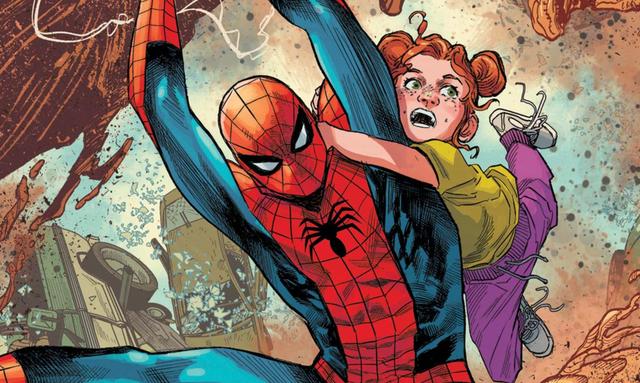If you click on a link and make a purchase we may receive a small commission. Read our editorial policy.
Joker’s wild: The Clown Prince of Crime has just received a terrifying cosmic upgrade
As Batman tries to escape from an alternate DCU, the Joker has become a threat for the entire DC Omniverse.

Spoilers for Batman #134 ahead.
There is no other mind in the DC Universe as uniquely fractured and fragmented as the Joker’s. More than just the most sadistic supervillain in Batman’s colorful rogues’ gallery, the Joker’s shattered psyche gives him a perspective on the shared superhero universe beyond his usual criminal activities in Gotham City. And as Batman finds himself trapped in an alternate universe version of the DCU, with its heroes and villains reimagined in drastically different roles, he learns that the Joker is similarly aware of the radical changes to reality, thanks to unusual cognitive functions.
The reveal is a quiet but major upgrade for the Clown Prince of Crime, who has previously maintained a largely street-level presence. The Joker has seen temporary boosts in his power and abilities before, but this particular instance sheds new light on the character, especially in the wake of recent changes to the ever-evolving state of reality for the DC Omniverse. Here’s the story behind the Joker’s expanded consciousness to cosmic levels, why it makes perfect sense for the character, and what it could mean for the wider DCU.
Through a Gotham darkly

Chip Zdarsky and Jorge Jiminez’s opening story arc on the Batman monthly title introduced the malevolent sentient artificial intelligence program Failsafe. Programmed with Batman’s contingency plans to eliminate crime and perceived threats to its existence, including the Justice League (albeit without Bruce Wayne’s sense of humanity and restraint), Failsafe steadily brought its cold, clinical interpretation of law and order to Gotham before expanding its agenda to the wider DCU.
Batman confronted his rogue creation outside of the Fortress of Solitude, ready to destroy Failsafe once and for all only for the machine to seemingly vaporize the Dark Knight on the spot. This cliffhanger kicked off the following story arc, “The Bat-Man of Gotham,” with Zdarsky, Mike Hawthorne, and Adriano di Benedetto. In this arc, Bruce wakes up in a version of Gotham where he had never become Batman, with the city under control by new versions of its various villains. The most fearsome of these figures is Darwin Halliday, who holds the supervillain persona of the Red Mask.
The rise of Red Mask

In this alternate DCU, Halliday is a genius pharmaceutical mogul who actively was involved in his company’s cutting edge experiments into neuroscience. After accidentally ingesting one of his own compound, Halliday’s consciousness opened to provide a window into the mind of the Joker, the man Halliday was destined to be-- despite the wholesale changes to reality in this universe. Having caught a glimpse into this mind, Halliday became obsessed with gaining more insight from the Joker’s perspective, not just from the main DCU but from all possible iterations of the supervillain.
Halliday began to secretly conduct experiments into human sanity and refine the compound that gave him this twisted perspective into the Omniverse. Halliday created his own supervillain mantle, the Red Mask. Halliday’s expanding explorations into the Joker’s mind has made him aware of his place in different universes and timelines, including the knowledge of Bruce’s identity as Batman and the different permutations of their longstanding antagonistic history. Reunited with Batman in this alternate Gotham, the Joker is ready to continue his vendetta through this world’s persona as Red Mask, with all of Halliday’s vast resources at his disposal.
The case for super sanity

Grant Morrison and Dave McKean’s seminal 1989 original graphic novel Arkham Asylum: A Serious House on Serious Earth posited that the Joker’s psyche has evolved into a sort of “super sanity,” constantly adapting his personality in accordance to the sensory information it received. This enables the Joker to radically alter his personality on the fly, accounting for his metamorphosis from a calculating serial killer to a zany gimmick-driven supervillain to a criminal mastermind whenever the fancy strikes him. This is further evidenced during Morrison’s run on the main Batman ongoing series which saw him turn into an even more nightmarish figure when a Batman imposter shot him in the face, while his personality has shifted in different directions in subsequent stories.
During Morrison and Howard Porter’s run on JLA, the Martian Manhunter is able to telepathically sort through the Joker’s psyche to get him to temporarily regain his sanity – in this instance, the Joker visibly expresses guilt for all he’s done before standing down. Joker was similarly "cured" in Batman: Legend of the Dark Knight #145 by Chuck Dixon and Jim Aparo after being immersed in a Lazarus Pit, becoming remorsefully aware of his crimes before his earlier psyche reasserts itself.
A fractured kaleidoscope for the DCU

Though the only incarnation of the Joker to display this cosmic awareness of the DC Omniverse so far is the Red Mask, there are wider-reaching consequences of this reveal beyond this alternate universe. Halliday’s experiments hint that any version of the Joker could receive a similar upgrade with the right cocktail of chemicals at their disposal, with the potential to link consciousnesses with other iterations of himself to create the perfect Clown Prince of Crime for the entire Omniverse.
Geoff Johns and Jason Fabok’s acclaimed miniseries Batman: Three Jokers played with the idea of having the supervillain’s entire history shared between three literal versions of the character working together against Batman during different stages of superhero career. “The Bat-Man of Gotham” condenses this idea, presenting different facets of the Joker as their own extensions of the supervillain’s splintered psyche, all unified by their lethal animosity towards Batman.
With his evolving, shifting personalities and unique mind, the Joker is oddly the perfectly positioned character in the DCU to comprehend the evolving state of the Omniverse, encompassing all multimedia iterations of the DCU. However, for as cosmic as the Joker’s awareness and perspective has grown, the supervillain still only has eyes for Batman, taking their grudge into even more ambitiously deadly arenas. In trying to escape from this alternate Gotham, Batman is up against a version of his greatest villain able to draw from all his past personalities and memories as the ultimate challenge for the Dark Knight to return to the DCU he knows and loves.
Batman #134 is written by Chip Zdarsky, penciled by Mike Hawthorne, inked by Adriano di Benedetto, colored by Tomeu Morey, and lettered by Clayton Cowles. “The Bat-Man of Gotham” concludes in Batman #135, on sale May 2 from DC Comics.
Everything we know about Blue Beetle, DC's next big screen star
Follow Popverse for upcoming event coverage and news
Find out how we conduct our review by reading our review policy
Let Popverse be your tour guide through the wilderness of pop culture
Sign in and let us help you find your new favorite thing.
















Comments
Want to join the discussion? Please activate your account first.
Visit Reedpop ID if you need to resend the confirmation email.